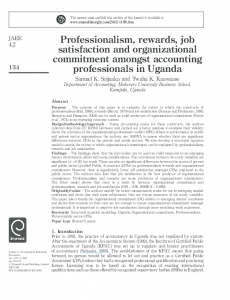Unlike humans, AI lacks the innate ability to grasp everyday knowledge and social norms, which can result in logically correct decisions but are practically or ethically flawed. The increasing reliance on AI for tasks ranging from mundane chores to complex decision-making can lead to human laziness. As AI systems take over more responsibilities, individuals might become less inclined to develop their skills and knowledge, relying excessively on technology. This dependency can diminish critical thinking and problem-solving abilities, as people might defer to AI solutions without questioning their validity or exploring alternatives. AI enhances decision-making by analyzing vast amounts of data quickly and accurately, identifying patterns and insights that might be missed by humans.
Biased and discriminatory algorithms
AI does present some significant dangers — from job displacement to security and privacy concerns — and encouraging awareness of issues helps us engage in conversations about AI’s legal, ethical, and societal implications. The importance of AI safety is to keep humans safe and to ensure that proper regulations are in place to ensure that AI acts as it should. These issues may not seem immediate, but addressing them now can prevent much worse outcomes in the future.
Skill loss in humans
- Businesses can create a chatbot or voice bot using AI to answer all of their client’s questions.
- There is a risk that algorithms are being developed and deployed faster than regulatory frameworks and ethical guidelines can keep up.
- Much of this progress has been driven by advances in machine learning techniques, particularly deep learning systems, which have made the leap in recent years from the academic setting to everyday applications.
- And even in cases where children aren’t physically harmed, the use of children’s faces in AI-generated images presents new challenges for protecting children’s online privacy and digital safety.
Many websites use digital assistants to deliver content based on user requests, enabling us to have conversational searches. Some chatbots are so sophisticated that it’s difficult to tell whether we’re communicating with a human or a machine. These systems can perform complex procedures with precision and accuracy, reducing the risk of human error and improving patient what happens if the contribution margin ratio increases safety in healthcare.
Before we jump on to the advantages and disadvantages of Artificial Intelligence, let us understand what AI is in the first place. From a bird’s eye view, AI provides a computer program the ability to think and learn cleared synonyms and antonyms on its own. It is a simulation of human intelligence (hence, artificial) into machines to do things that we normally rely on humans.
Job Losses Due to AI Automation
Robots equipped with AI can work alongside humans, difference between gross margin and gross profit performing tasks such as assembly, welding, and painting with precision and speed. Predictive maintenance uses AI to monitor equipment health and predict failures before they occur, preventing downtime and ensuring continuous production. These advancements result in higher production rates and better quality control. Even the most interesting job in the world has its share of mundane or repetitive work.
Despite their advanced capabilities, AI systems often need more common sense reasoning. They can process and analyze vast amounts of data but need help understanding context, making intuitive judgments, or adapting to new and unforeseen situations. This limitation can lead to errors or inappropriate actions in scenarios that require nuanced understanding and flexibility.
Perhaps the most notable example of this would be the program AlphaGo, developed by Google, which taught itself to play Go and within three days started inventing new strategies that humans hadn’t yet thought of. In this article, we’ll discuss the major benefits and drawbacks of adopting AI, both in everyday life and in business. We’ll also talk through some use cases for AI, to give you an idea of how AI can help in your life. Regardless of what you think of the risks of using AI, no one can dispute that it’s here to stay.
By nearly all accounts, AI comes with both advantages and disadvantages, which individuals and organizations alike need to understand to maximize the benefits this technology brings while mitigating the negatives. The development of artificial general intelligence (AGI) that surpasses human intelligence raises long-term concerns for humanity. The prospect of AGI could lead to unintended and potentially catastrophic consequences, as these advanced AI systems may not be aligned with human values or priorities. Lack of transparency in AI systems, particularly in deep learning models that can be complex and difficult to interpret, is a pressing issue. This opaqueness obscures the decision-making processes and underlying logic of these technologies. Omdia projects that the global AI market will be worth USD 200 billion by 2028.¹ That means businesses should expect dependency on AI technologies to increase, with the complexity of enterprise IT systems increasing in kind.
AI is already disrupting jobs, posing security challenges and raising ethical questions. But it remains to be seen how the technology will continue to develop and what measures governments may take, if any, to exercise more control over AI production and usage. AI (artificial intelligence) describes a machine’s ability to perform tasks and mimic intelligence at a similar level as humans. AI regulation has been a main focus for dozens of countries, and now the U.S. and European Union are creating more clear-cut measures to manage the rising sophistication of artificial intelligence.
AI has the potential to be dangerous, but these dangers may be mitigated by implementing legal regulations and by guiding AI development with human-centered thinking. If companies refuse to acknowledge the inherent biases baked into AI algorithms, they may compromise their DEI initiatives through AI-powered recruiting. The idea that AI can measure the traits of a candidate through facial and voice analyses is still tainted by racial biases, reproducing the same discriminatory hiring practices businesses claim to be eliminating.
 المجلس العلمي المحلي الناظور بسم الله مجراها ومرساها
المجلس العلمي المحلي الناظور بسم الله مجراها ومرساها 


